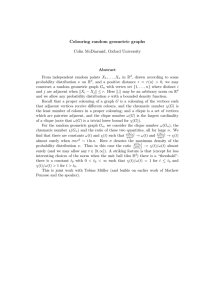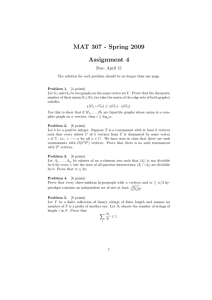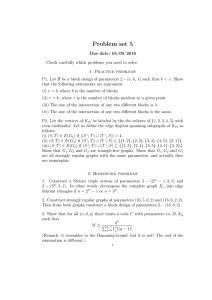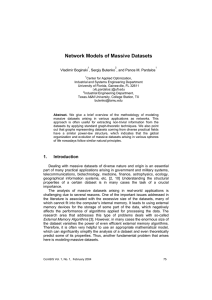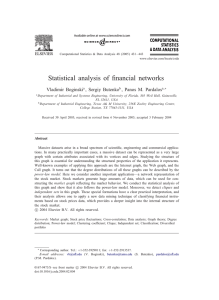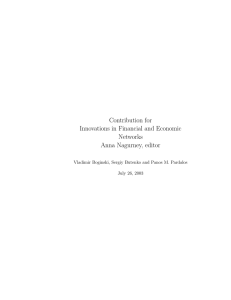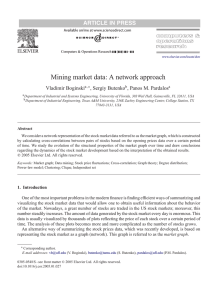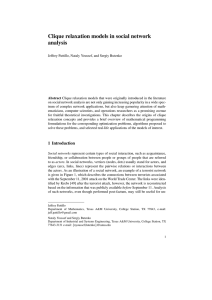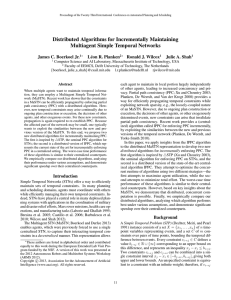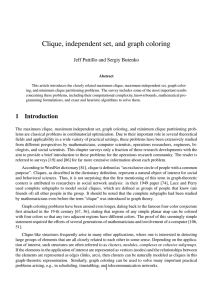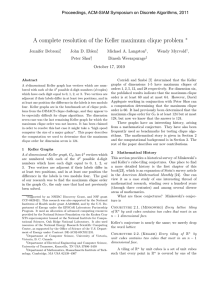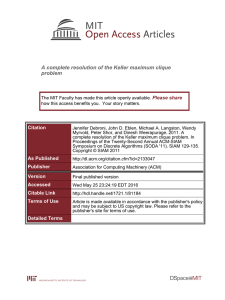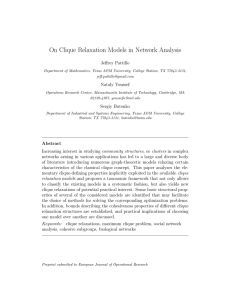Assignment #1 (two pages) Due Wednesday January 25 Math 523
advertisement
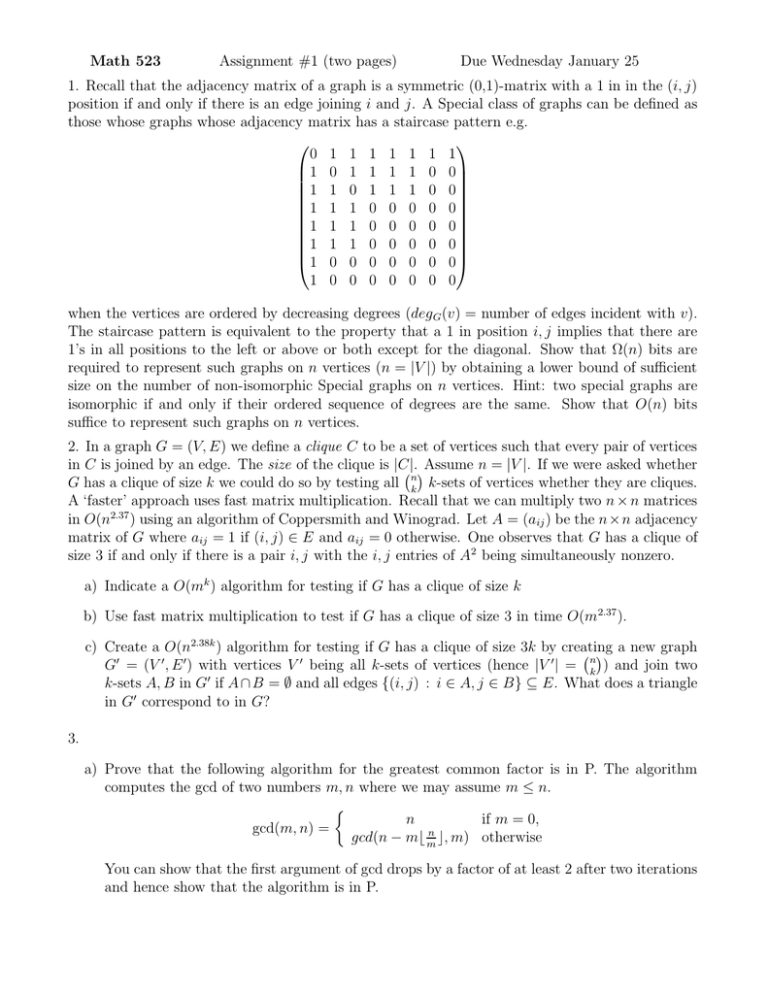
Math 523
Assignment #1 (two pages)
Due Wednesday January 25
1. Recall that the adjacency matrix of a graph is a symmetric (0,1)-matrix with a 1 in in the (i, j)
position if and only if there is an edge joining i and j. A Special class of graphs can be defined as
those whose graphs whose adjacency matrix has a staircase pattern e.g.
0 1 1 1 1 1 1 1
1 0 1 1 1 1 0 0
1 1 0 1 1 1 0 0
1 1 1 0 0 0 0 0
1 1 1 0 0 0 0 0
1 1 1 0 0 0 0 0
1 0 0 0 0 0 0 0
1 0 0 0 0 0 0 0
when the vertices are ordered by decreasing degrees (degG (v) = number of edges incident with v).
The staircase pattern is equivalent to the property that a 1 in position i, j implies that there are
1’s in all positions to the left or above or both except for the diagonal. Show that Ω(n) bits are
required to represent such graphs on n vertices (n = |V |) by obtaining a lower bound of sufficient
size on the number of non-isomorphic Special graphs on n vertices. Hint: two special graphs are
isomorphic if and only if their ordered sequence of degrees are the same. Show that O(n) bits
suffice to represent such graphs on n vertices.
2. In a graph G = (V, E) we define a clique C to be a set of vertices such that every pair of vertices
in C is joined by an edge. The size of the clique is |C|.Assume n = |V |. If we were asked whether
G has a clique of size k we could do so by testing all nk k-sets of vertices whether they are cliques.
A ‘faster’ approach uses fast matrix multiplication. Recall that we can multiply two n × n matrices
in O(n2.37 ) using an algorithm of Coppersmith and Winograd. Let A = (aij ) be the n × n adjacency
matrix of G where aij = 1 if (i, j) ∈ E and aij = 0 otherwise. One observes that G has a clique of
size 3 if and only if there is a pair i, j with the i, j entries of A2 being simultaneously nonzero.
a) Indicate a O(mk ) algorithm for testing if G has a clique of size k
b) Use fast matrix multiplication to test if G has a clique of size 3 in time O(m2.37 ).
c) Create a O(n2.38k ) algorithm for testing if G has a clique of size 3k by creating
a new graph
n
0
0
0
0
0
G = (V , E ) with vertices V being all k-sets of vertices (hence |V | = k ) and join two
k-sets A, B in G0 if A ∩ B = ∅ and all edges {(i, j) : i ∈ A, j ∈ B} ⊆ E. What does a triangle
in G0 correspond to in G?
3.
a) Prove that the following algorithm for the greatest common factor is in P. The algorithm
computes the gcd of two numbers m, n where we may assume m ≤ n.
n
if m = 0,
gcd(m, n) =
n
gcd(n − mb m
c, m) otherwise
You can show that the first argument of gcd drops by a factor of at least 2 after two iterations
and hence show that the algorithm is in P.
b) Prove that exact Gauss-Jordan elimination applied to integer data, when after each pivot you
reduce the fractions to lowest terms using the gcd function above, is in P. Gauss-Jordan is a
recursive algorithm. Applied to a matrix A, at the ith stage the matrix has been reduced to
one with the first i − 1 columns being the first i − 1 columns of the identity. Onet finds the
ith non-zero column of Ai and does a column interchange to make it the ith column. Then it
interchanges rows if necessary to have a non-zero entry in that column in the ith row. Then
it does a pivot (some elementary row operations of adding appropriate multiples of the ith
row to the other rows) to obtain Ai+1 . These operations can be viewed as a change of column
basis when we start with the matrix [A | I].
1 0 0 0
1 0 0
∗
0 1 0 0
0 1 0
∗
∗
∗
0 0 1 0
0 0 1
∗
∗
0 0 0 1
0 0 0 a(6= 0)
∗
e.g. A3 =
→ A4 =
0 0 0 0
0 0 0
∗
.. .. .. ..
.. .. ..
. . . .
. . .
∗
0 0 0 0
0 0 0
∗



